<< Previous | Displaying results 5441-5450 of 6769 for "" | Next >>
Survivors in Langenstein after the camp was liberated by the 83rd Infantry Division. Langenstein, Germany, April 17, 1945.
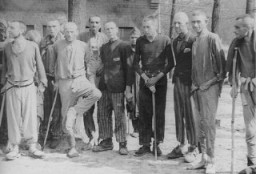
Insignia of the 9th Armored Division. Although no nickname for the 9th was in common usage throughout World War II, "Phantom" division was sometimes used in 1945. It originated during the Battle of the Bulge, when the 9th Armored Division seemed, like a phantom, to be everywhere along the front.
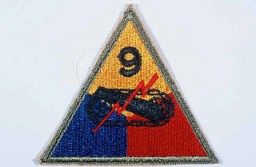
The commanding general of the 9th Armored Division (third from right), and members of the division who won the Distinguished Service Cross pose with the sign placed on the Ludendorff Bridge after its capture. US Army Signal Corps photograph taken by W. Spangle on September 18, 1945, several months after the bridge was captured.
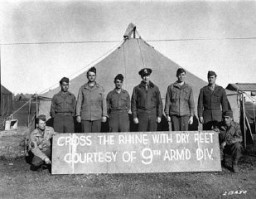
The sign erected by the 9th Armored division on the Ludendorff bridge after its capture. March 11, 1945. US Army Signal Corps photograph taken by W. Spangle.
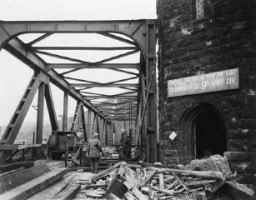
Members of the US 9th Armored Division meet up with Soviet units near Linz, Austria. This photograph was taken by US Army Signal Corps photographer Arnold E. Samuelson. Austria, May 2, 1945.

Members of the US 9th Armored Division meet up with Soviet units near Linz, Austria. This photograph was taken by US Army Signal Corps photographer Arnold E. Samuelson. Austria, May 2, 1945.
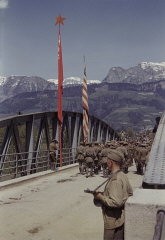
Insignia of the 10th Armored Division. The "Tiger Division" nickname of the 10th originates from a division-wide contest held while it was training in the United States, symbolizing the division "clawing and mauling" its way through the enemy.
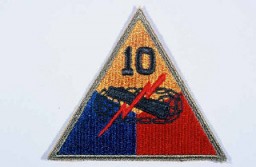
Insignia of the 95th Infantry Division. The 95th Infantry Division, the "Victory" division, gained its nickname from the divisional insignia approved in 1942: the arabic numeral "9" combined with the roman numeral "V" to represent "95." The "V" led to the nickname, since the letter "V" was universally recognized as an Allied symbol for resistance and victory over the Axis during World War II.
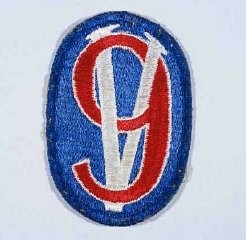
Insignia of the 8th Armored Division. The nickname of the 8th Armored Division, the "Thundering Herd," was coined before the division went to Europe in late 1944. It was also known as the "Iron Snake" late in the war, after a correspondent for Newsweek likened the 8th to a "great ironclad snake" as it crossed the Rhine River in late March 1945.
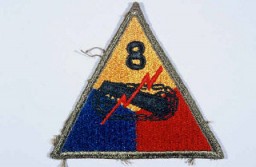
US soldiers of the 8th Infantry Regiment seek cover behind hedges and signs to return fire to German forces holding the town of Libin. Belgium, September 7, 1944.
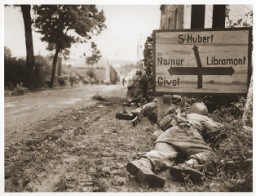
We would like to thank Crown Family Philanthropies, Abe and Ida Cooper Foundation, the Claims Conference, EVZ, and BMF for supporting the ongoing work to create content and resources for the Holocaust Encyclopedia. View the list of donor acknowledgement.